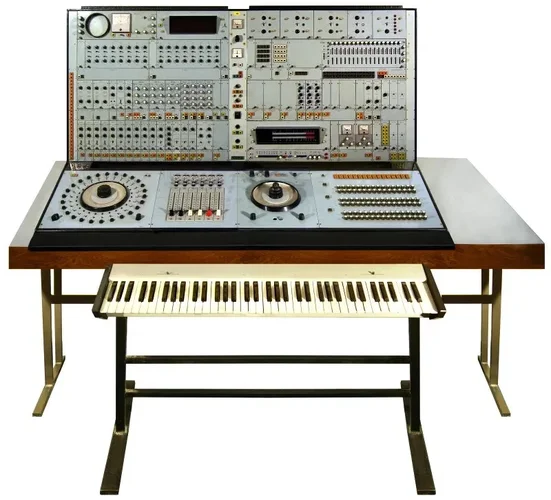Synthesizer-Themen aus allen Zeiten, die sich so als eigener Thread nicht lohnen würden, aber die interesaant/angenehm zum lesen, hören oder sehen sind.
Anekdoten, Dinge die man nicht wusste und doch spannend sind, aber über die man so nicht extra reden würde.
Keine Witzesammlung - soll und muss mit Synths zu tun haben und was zu gucken da sein oder irgendwie ein Blickwinkel sich ergeben.
Grund: ich wusste nicht, wo ich das mal hin packen sollte, fand es aber interessant. DAS IST DER SINN.
Beispiel:
Diese beiden Beiträge haben nur einen Zusammenhang- beides Synths aus CZ. Einfach so.
Als Beispiel einen Synthesizer aus der Tschechei und - d
a ich als Kind diese Tschechischen Filme wie "Die Besucher" (SciFi) oder "die Märchenbraut" als lustig und originell empfand, hier einen kleinen Bericht über den Musiker, der die Filme untermalt, vertont und musikalisch begleitet hat. Viel analoges Zeug und Sounds. Synthesizer - wo man sie eher nicht erwarten mag. Das waren Kinderserien - das mit dem Zentraldenker, einem Hauptelektronengehirn mit organischen Elementen ist eine wunderbare Idee.


https://www.youtube.com/watch?v=_2s4ZvHrS_I&fbclid=IwAR2NnayyB-023p66y5poEm77Uh3bHHBo9NfqHLMZjraKde3PZ5KURT7XzQg
Anekdoten, Dinge die man nicht wusste und doch spannend sind, aber über die man so nicht extra reden würde.
Keine Witzesammlung - soll und muss mit Synths zu tun haben und was zu gucken da sein oder irgendwie ein Blickwinkel sich ergeben.
Grund: ich wusste nicht, wo ich das mal hin packen sollte, fand es aber interessant. DAS IST DER SINN.
Beispiel:
Diese beiden Beiträge haben nur einen Zusammenhang- beides Synths aus CZ. Einfach so.
Als Beispiel einen Synthesizer aus der Tschechei und - d
a ich als Kind diese Tschechischen Filme wie "Die Besucher" (SciFi) oder "die Märchenbraut" als lustig und originell empfand, hier einen kleinen Bericht über den Musiker, der die Filme untermalt, vertont und musikalisch begleitet hat. Viel analoges Zeug und Sounds. Synthesizer - wo man sie eher nicht erwarten mag. Das waren Kinderserien - das mit dem Zentraldenker, einem Hauptelektronengehirn mit organischen Elementen ist eine wunderbare Idee.


https://www.youtube.com/watch?v=_2s4ZvHrS_I&fbclid=IwAR2NnayyB-023p66y5poEm77Uh3bHHBo9NfqHLMZjraKde3PZ5KURT7XzQg
Zuletzt bearbeitet:


